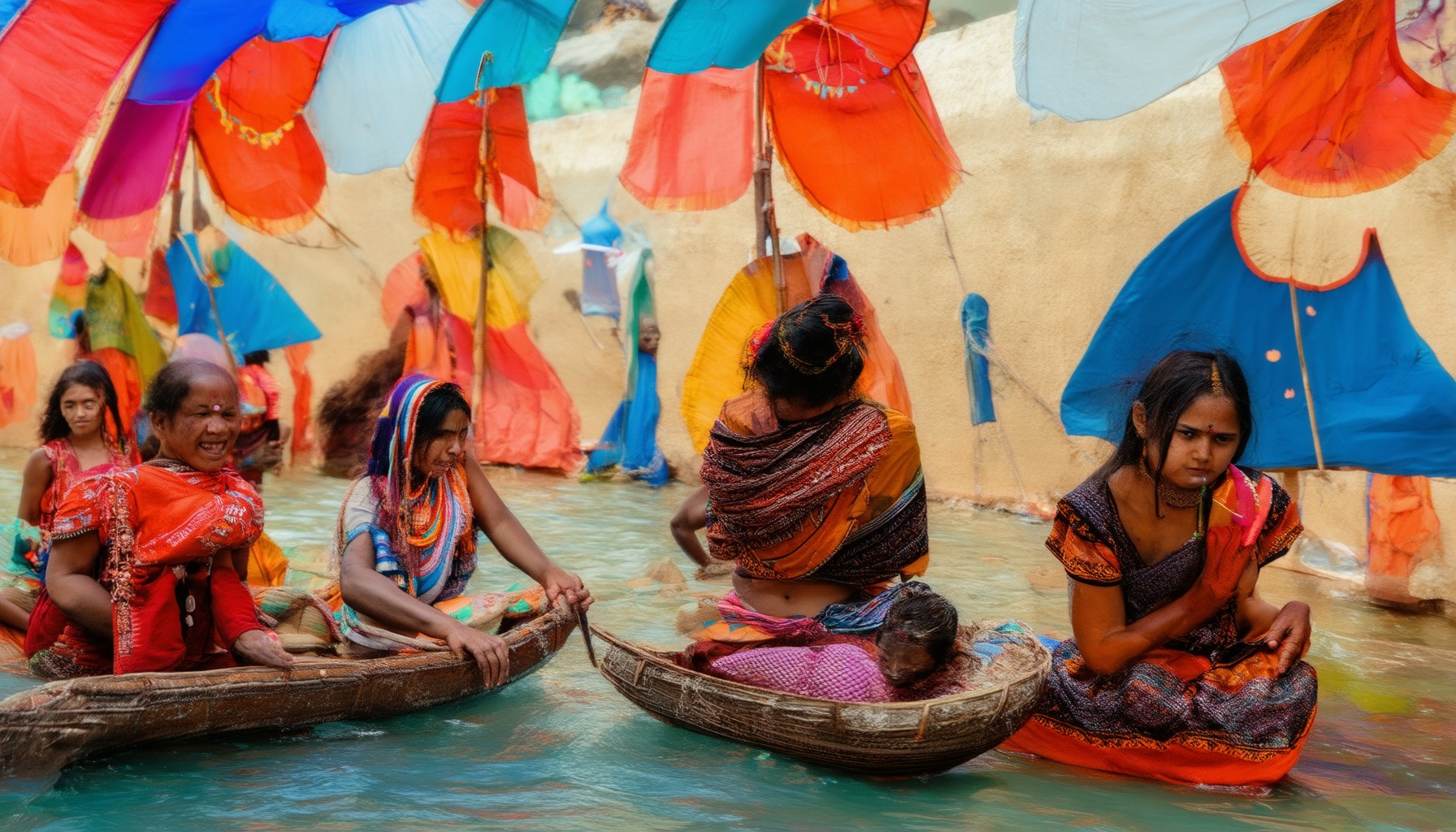Cultural immersion programs offer transformative experiences that bridge gaps between diverse cultures, fostering mutual understanding and personal growth. These programs are designed to immerse participants deeply into foreign environments, allowing them to experience traditions, languages, and customs firsthand. Whether for students, professionals, or enthusiasts, cultural immersion programs provide unique opportunities to broaden perspectives and build cross-cultural connections. From language learning and community engagement to hands-on activities and collaborative projects, these programs cater to a wide range of interests and goals. By exploring examples, activities, and approaches, this article delves into the essence of cultural immersion, highlighting its benefits, methodologies, and real-world applications. Discover how cultural immersion programs can enrich lives, strengthen communities, and promote global harmony through meaningful and impactful experiences.
Key Takeaways
– Cultural Immersion Offers Deep, Authentic Experiences: Engage in local traditions, customs, and daily life for an immersive understanding of a culture.
– Language Learning Enhances Connections: Mastering the local language facilitates meaningful relationships and richer cultural interactions.
– Participate in Local Activities for True Insight: Join festivals, events, and community projects to gain authentic cultural insights.
– Engage with Local Economies: Interact with artisans, businesses, and communities to understand their social and economic fabrics.
– Prepare Thoroughly for Success: Learn basic phrases, research customs, pack appropriately, and stay open-minded for a smooth experience.
– Volunteering and Homestays Provide Unique Opportunities: Live with locals and contribute to meaningful projects while experiencing their daily lives.
– Language Exchange Programs Foster Mutual Growth: Share your skills while learning and embracing a new culture.
– Understand Cultural Approaches for Effective Communication: Recognize similarities, celebrate diversity, and balance perspectives to foster cross-cultural understanding.
– Resources Like Volunteer Abroad and Workaway Facilitate Immersive Journeys: Access platforms to connect with global opportunities for cultural exploration.

What is a Cultural Immersion Program?
A cultural immersion program is an experiential learning initiative designed to help participants deeply understand and integrate into a foreign culture. These programs typically involve living, working, or studying in another country or community, allowing individuals to experience daily life, traditions, and social norms firsthand.
Types of Cultural Immersion Programs
- Language Immersion : Participants are fully submerged in a language environment, often living with native speakers to accelerate language acquisition.
- Homestay Programs : Staying with local families provides a genuine cultural experience, offering insights into family dynamics and traditional lifestyles.
- Volunteer Immersion : Engaging in volunteer work within a community allows participants to give back while immersing themselves in local customs and challenges.
- Professional Immersion : Work-related programs enable professionals to experience a foreign workplace culture and gain international exposure.
Benefits of Cultural Immersion
- Personal Growth : Enhances empathy, adaptability, and problem-solving skills.
- Global Awareness : Broadens perspectives and fosters cross-cultural understanding.
- Career Opportunities : Builds international experience, which can enhance employability and open doors to global careers.
- Community Engagement : Provides opportunities to contribute to local communities while gaining meaningful connections.
Why Participate?
Cultural immersion programs offer a unique blend of education, adventure, and service. They allow individuals to step outside their comfort zones, fostering personal development while contributing positively to global communities. By embracing these experiences, participants can create lasting memories, strengthen international networks, and return with a fresh worldview.
For more information on how Inxchan can help you find the perfect cultural immersion program, visit us at inxchan.com .
Cultural Immersion: A Comprehensive Overview
Cultural immersion refers to the process of fully engaging with and absorbing the customs, traditions, and social norms of a particular culture. It involves actively participating in the local lifestyle, which allows for a deeper understanding and connection with the community.
Here are some examples of cultural immersion experiences:
- Festivals and Events:** Participating in local celebrations, such as festivals, parades, or cultural fairs, offers a firsthand experience of the traditions and values of the host community. Examples include celebrating Diwali in India or Mardi Gras in New Orleans.
- Volunteering:** Engaging in community service projects, such as working in a soup kitchen, mentoring youth, or helping in an orphanage, provides a meaningful way to connect with locals and understand their daily lives.
- Travel with Local Guides:** Exploring historical sites, natural landscapes, and cultural landmarks with knowledgeable local guides can enhance the travel experience and foster a deeper appreciation for the destination’s heritage.
- Art and Music:** Attending local concerts, art exhibitions, or theater performances can expose individuals to the creative expressions of the culture, offering insight into its artistic traditions.
- Religious Ceremonies:** Participating in religious rituals, such as attending church services, mosque visits, or meditation retreats, allows for a spiritual connection with the culture and its beliefs.
- Culinary Experiences:** Enrolling in cooking classes to learn traditional recipes or staying in a homestay to experience authentic cuisine can bridge the gap between food and culture, offering a sensory immersion.
- Professional Immersion:** Working or interning in a foreign country provides an opportunity to navigate the professional landscape, understand workplace dynamics, and integrate into the local workforce.
Cultural immersion is not just about observation; it’s about active participation and engagement. By immersing yourself in the local culture, you gain valuable insights and develop a greater appreciation for the diversity of human experiences.

What is a Cultural Immersion Activity?
Cultural immersion is the process of fully immersing oneself in a foreign culture through meaningful experiences. It involves interacting with local communities, understanding their customs, traditions, and way of life. This type of activity allows participants to gain a deeper appreciation for diverse cultures while fostering mutual respect and understanding.
Types of Cultural Immersion Activities
- Homestay Experiences
Staying with local families or communities provides an authentic glimpse into daily life. This allows for hands-on participation in traditional activities, meals, and customs, creating a bond between visitors and hosts. - Community Service Projects
Engaging in volunteer work within a local community helps connect travelers with residents. Activities may include helping in schools, orphanages, or environmental conservation efforts, contributing to a greater sense of belonging. - Workshops and Classes
Participating in cultural workshops or classes offers insight into traditional skills, art forms, and practices. These sessions often include music, dance, cooking, or craftsmanship, enriching the visitor’s knowledge and experience. - Festivals and Events
Joining local festivals or celebrations provides an opportunity to witness cultural rituals, parades, and traditions firsthand. This immersive environment allows for active participation and observation of vibrant cultural expressions. - Language Exchange Programs
Interacting with native speakers through language exchange programs facilitates cultural dialogue. Sharing languages and stories fosters cross-cultural communication and mutual learning.
Examples of Cultural Immersion Activities
- Aboriginal and Torres Strait Islander Cultural Immersions :
Experience traditional Australian Indigenous culture through art, storytelling, and bush medicine workshops, often facilitated by local communities. - Asian Cultural Immersions :
Engage in tea ceremonies, calligraphy lessons, or temple visits in countries like Japan, China, or Thailand to delve into rich cultural heritage. - African Cultural Immersions :
Participate in drumming circles, traditional dancing, or village life in countries like Ghana or Kenya to connect with vibrant African traditions.
Benefits of Cultural Immersion
- Personal Growth : Exposure to different lifestyles and perspectives encourages self-reflection and broadens one’s worldview.
- Cultural Preservation : Support local traditions and practices by participating in and promoting cultural activities.
- Building Bridges : Foster international friendships and collaborations through shared cultural experiences.
How Inxchan Can Help
At Inxchan, we specialize in organizing transformative travel experiences that immerse you in unique cultures. Our guided tours and volunteer opportunities allow you to engage deeply with local communities, ensuring meaningful and memorable interactions.
Explore our cultural immersion guides and discover how you can participate in impactful experiences around the world. Whether through homestays, community projects, or festivals, Inxchan connects you to global adventures that inspire change and growth.

Cultural Immersion Method
The cultural immersion method is a powerful approach to understanding and experiencing a new culture deeply. Unlike traditional tourism, cultural immersion involves fully immersing yourself in the local lifestyle, traditions, and environment.
Key Components of Cultural Immersion
- Living with Locals: Staying with families or communities allows you to experience daily life firsthand, from meals and routines to customs and values.
- Language Learning: Engaging with native speakers helps you master the language and builds meaningful connections.
- Participating in Daily Activities: Joining local events, festivals, or work projects provides insight into traditions and community dynamics.
- Engaging in Local Economy: Interacting with local businesses and artisans enriches your understanding of the culture’s economic and social fabric.
Benefits of Cultural Immersion
- Deep cultural understanding and empathy.
- Authentic, unforgettable experiences.
- Promotes personal growth and self-awareness.
- Fosters cross-cultural communication skills.
How to Prepare for Cultural Immersion
- Learn Basic Phrases: Knowing essential language skills can help you navigate daily interactions.
- Research Local Customs: Familiarize yourself with traditions, dress codes, and social norms.
- Pack Appropriately: Dress modestly and adapt to local weather conditions.
- Stay Open-Minded: Embrace new experiences and be willing to adapt to different ways of life.
Examples of Cultural Immersion Experiences
- Volunteering: Work on community projects or environmental initiatives to connect with locals.
- Homestay Experiences: Live with a local family to experience their daily routines and traditions.
- Language Exchange Programs: Share your skills while learning the local language and culture.
Resources for Cultural Immersion
- Volunteer Abroad : Connect with global volunteer opportunities.
- Couchsurfing : Experience cultural immersion by staying with locals.
- Workaway : Combine work and travel with cultural immersion opportunities.
Understanding Four Cultural Approaches
The concept of cultural approaches has gained significant attention in various fields, particularly in education and cross-cultural communication. Among the most commonly discussed approaches are:
1. Neutrality
Neutrality in cultural approaches involves presenting information without imposing any particular viewpoint or favoring one culture over another. This method emphasizes objectivity and fairness, allowing individuals to form their own opinions based on presented facts and perspectives.
2. Similarity
Similarity focuses on identifying and highlighting commonalities among different cultures. By emphasizing shared values, beliefs, and practices, this approach aims to foster mutual understanding and appreciation among diverse groups.
3. Diversity
Diversity-oriented approaches prioritize the celebration of differences. This method encourages recognition of unique traditions, customs, and perspectives, aiming to promote inclusivity and respect for cultural distinctness.
4. Diversimilarity
Diversimilarity combines elements of similarity and diversity by acknowledging both commonalities and differences. This approach suggests that effective cultural engagement requires balancing these two perspectives to create a nuanced understanding of cultural dynamics.
To better understand these approaches, consider the example of teaching about cultural diversity in schools. A neutrality-based curriculum might present facts without judgment, while a similarity-focused approach could highlight common human experiences. In contrast, a diversity-centric curriculum might emphasize the unique contributions of different cultures, and a diversimilarity model might integrate both perspectives to provide a more balanced view.
Each approach has its strengths and weaknesses. Neutrality ensures impartiality but may lack depth, while similarity fosters connection but risks oversimplification. Diversity promotes individuality but might alienate those unfamiliar with certain customs, and diversimilarity offers a middle ground by incorporating both commonalities and differences.
For educators, adopting a diversimilarity approach can be particularly effective, as it provides a framework for exploring both shared human experiences and cultural uniqueness. This balanced perspective helps students develop a more holistic understanding of cultural dynamics, preparing them to engage with diverse communities in informed and respectful ways.
Explore more resources on cultural approaches and education by visiting our dedicated guide and our 教育资源页面 .

What is an example of Immersion Learning?
Immersion learning is a method of language acquisition that places learners in real-life situations where they can use the target language effectively. Here are some examples:
- Traveling Abroad: Immersing yourself in a foreign country where the local language is spoken allows you to practice daily, from ordering food to navigating public transport.
- Language Exchange Programs: Staying with a native speaker who can provide hands-on language practice in everyday conversations.
- Volunteering: Working on projects in a foreign country where you’re required to communicate in the local language, such as through organizations like Inxchan .
- Enrolling in Language Schools: Taking intensive courses where you’re submerged in the language, attending classes and participating in speaking exercises daily.
These experiences help learners develop confidence, fluency, and cultural understanding, making them more proficient in the target language over time.





0 Comments